Early bathroom suites, like this 1885 J.L. Mott example, were designed to look like furniture, with fixtures encased in heavy, often carved, wood. (That’s the toilet, front left.) Arcalus Archive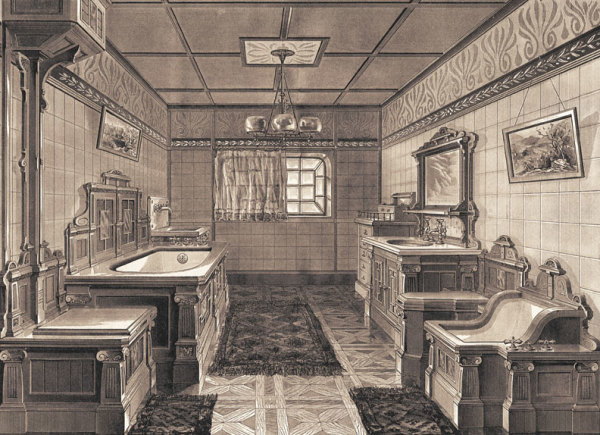
Let’s get one thing straight: Thomas Crapper did not invent the flush toilet. In fact, the famed Victorian plumber doesn’t even get credit for the term “crap” (in use well before he was in nappies). It was actually in the 1590s that Sir John Harington, a godson of Queen Elizabeth I, introduced the first flush toilet. Harington’s self-described “privie in perfection” was a noisy, valved contrivance called the Ajax. It worked well enough that Elizabeth allegedly installed one (the first “royal flush”?). But despite this regal endorsement, Harington’s peers turned up their noses at the Ajax—literally. The bowl washed straight into a fetid cesspool below, so the stench outweighed the contraption’s convenience. Harington proved that a toilet without a sewer is just a gigantic chamber pot, and his novel idea went down the drain.
It would be nearly 300 years before the endlessly inventive (and bodily function obsessed) subjects of a different queen—Victoria—finally got a handle on Harington’s idea. In the 1880s, working toilets were wed to working sewers, and the world was changed forever. Forget antibiotics, the steam engine, central heat, and the electric light—flushing toilets and sewer systems are arguably the most important innovations of the 19th century (which one on that list would you give up last?), making modern urban civilization possible and keeping disease at bay.
The first flushing-rim toilet made its debut in 1824. Arcalus Archive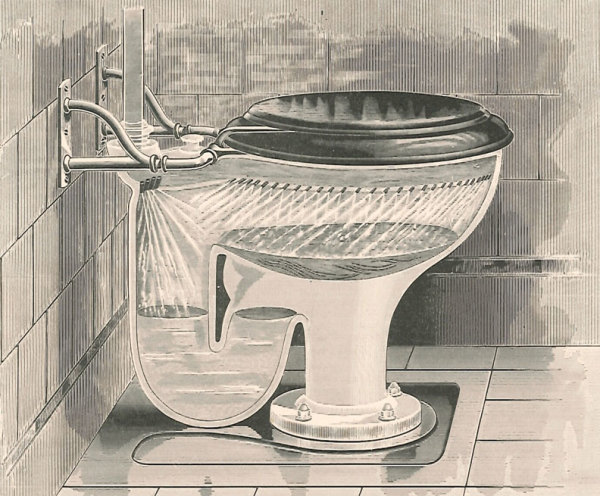
Water Closet
If you’re still reeling from the revelation that Thomas Crapper wasn’t the fountainhead of flushing, hold on to your toilet seat, because this modern marvel isn’t even really called a toilet: It’s a water closet. In the 1870s, most folks did their business—as infrequently as possible—in two ways: in a hole in the ground, or in a chamber pot (often concealed in a “commode,” “cabinet chair,” or box-like “close stool”). A “toilet” was just a dressing table or washstand, a meaning that eventually got flushed away when water closets adopted the moniker.
In the 1880s, the earliest flushing water closets were made to resemble familiar chamber pots and commodes. In fact, entire bathroom suites—tubs, lavatories, water closets, foot baths, and sitz baths (for soaking nether regions)—were elaborately encased in carved and stained woodwork that was closer to the parlor than the privy.
High-tank toilets ruled the bathroom during the Victorian era. Arcalus Archive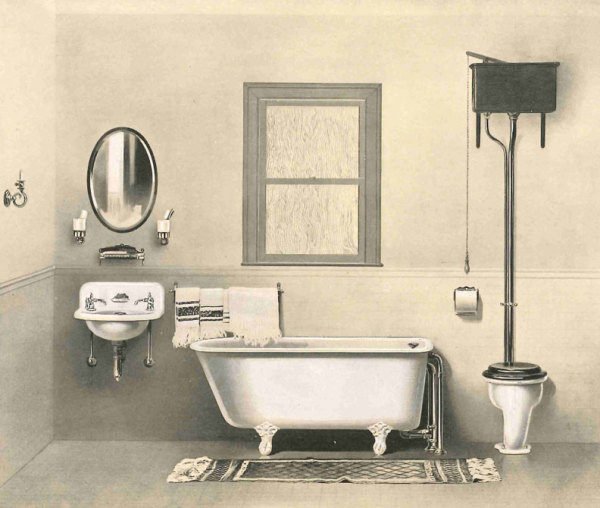
It wasn’t long before folks discovered that wood, water, and other (ahem) stuff didn’t mix. Those great bathroom suites of Gilded Age mansions were heaven to behold, but hell to maintain, and by the late 1880s, “open plumbing” was coming into vogue, with porcelain fixtures in full view. Of course, the Victorians then did to these newly visible vessels what they did best—they covered them with intricate embossing, magnificent glazing, and gilded decoration. Late Victorian toilets were masterpieces of the potter’s art, incorporating everything from Japanese and Delft-inspired motifs to classical dolphins and the curling trunks of elephants. Though this juxtaposition of bawdy and beautiful is almost comically extreme, the cutting-edge shock and awe that sitters of the day must have experienced is nearly impossible for us to imagine now.
The early 20th century saw the short-lived reign of the tankless pressure-valve toilet. Arcalus Archive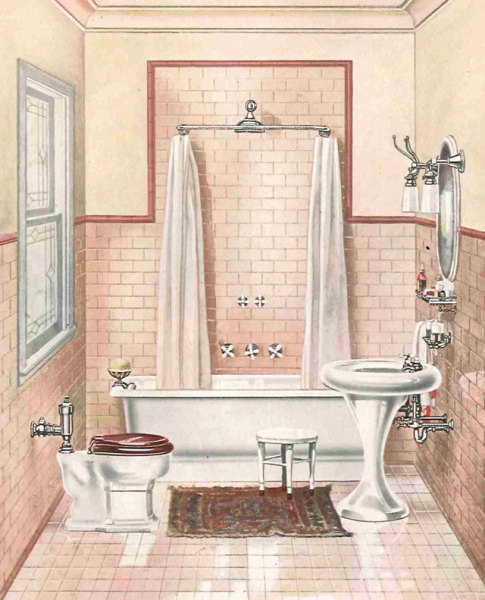
Early Improvements
The trajectory of the toilet after its gloriously decadent heyday in the 1890s is one of continued innovation and improvement. Between 1900 and 1910, the early washout closets were replaced by more efficient washdown and siphon-jet models; high tanks transitioned to low tanks; and ornamentation—besides the occasional tasteful beading—virtually disappeared in favor of smooth, white, sanitary (i.e., easy to keep clean) surfaces.
By 1910, toilets had pretty much arrived at a form and function not vastly different from today. A one-piece vitreous china toilet appeared in 1922, and colored porcelain glazes revolutionized plumbing palettes after 1928. Economic pressures during the Great Depression made the new, more affordable close-coupled two-piece model popular—the same freestanding, 12″ rough-in toilet we all use today. Later in the ’30s, the Streamline industrial-design trend produced some of the most startlingly modern toilets ever seen.
Beginning in the 1930s, close-coupled toilets in a rainbow of colors were all the rage. While the design continues to be popular today, colorful fixtures faded by the 1970s. Arcalus Archive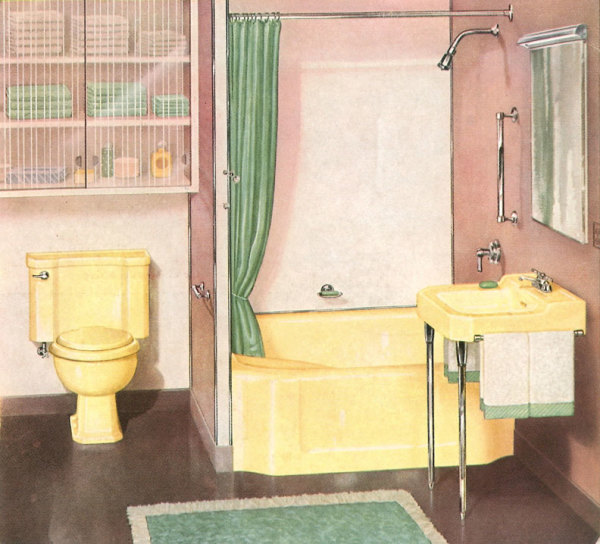
Unless you count NASA’s space toilets, the postwar era brought mostly incremental shifts in shapes and colors (and shag-carpet seat covers). More recently, environmental concerns have resulted in low-flush and dual-flush capabilities. However, despite a century of tinkering with our toilets, a 2013 toilet is not all that different from a classic 1913 water closet. While Harington’s godmother Elizabeth I might be baffled by a 21st-century Ajax, Queen Victoria would easily recognize the porcelain seat upon which her great-great-granddaughter, Elizabeth II, does her sovereign business. In this modern “game of thrones,” we’re all privileged members of the same royal family.







